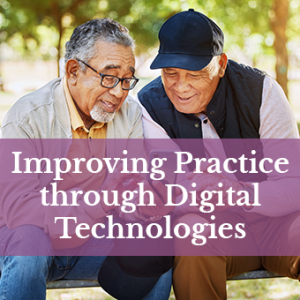
Technology and Functionality: An Initial Analysis of Gait Using Virtual Reality in Older Adults

Presenter(s):
Benaquenico Pedro Luanda; Rita Bárbara; Silvana Silveira, Universidade Privada de Angola, Angola
Abstract
Introduction:
Population aging presents significant challenges to maintaining autonomy and preventing falls. Gait is a key marker of physical functionality in older adults and may be influenced by visual and cognitive stimuli. Virtual reality (VR) is a globally recognized therapeutic tool that enables safe and controlled simulation of real-world environments. This pilot study aimed to analyze habitual gait in older adults with and without the use of VR and to explore its functional impact within the Angolan context.
Objective:
To compare habitual gait speed with gait under virtual reality conditions in older adults, and to analyze its correlation with functional performance as measured by the Timed Up and Go (TUG) test.
Methods:
A descriptive, observational study was conducted with 10 healthy older adults aged 60–80 years, of both sexes, with no diagnosed motor or cognitive impairments. Participants performed the TUG and two 5-meter gait tests: (1) habitual gait, and (2) gait using VR through Shinecon SC-G04E goggles simulating a clinical environment. Time was recorded using a digital stopwatch, and gait speed was calculated in meters per second. Descriptive statistics (mean, standard deviation) and Pearson’s correlation were used to assess associations between TUG scores and gait speed. Statistical significance was set at p < 0.05. Ethical approval was obtained from the Universidade Privada de Angola Research Ethics Committee.
Results:
The average habitual gait speed was 0.83 m/s (±0.09), while gait speed with VR was 0.78 m/s (±0.10), with no statistically significant difference (p = 0.18). The mean TUG time was 11.0 seconds (±1.7). A strong negative correlation was observed between TUG time and gait speed (r = –0.78; p < 0.01), indicating that better functional mobility was associated with faster gait. Three participants experienced initial hesitation when using the VR goggles, which was resolved with brief guidance.
Conclusion:
Virtual reality proved to be a safe, feasible, and well-accepted tool for assessing gait in older adults. Its implementation in clinical physiotherapy settings in Angola has the potential to support fall prevention strategies and promote functional independence. Further studies with larger samples and longitudinal designs are recommended to deepen understanding and validate therapeutic protocols.
Keywords:
Older adults, Virtual reality, Physiotherapy.
Bio(s):
PhD candidate in Rehabilitation Sciences, university professor, and current head of the Department of Physiotherapy at the Universidade Privada de Angola. She works in the training of physiotherapists and in the organization of academic and clinical programs focused on the care of critically ill patients, functional rehabilitation, and elderly care. She leads initiatives aligned with the Decade of Healthy Ageing (2021–2030) by the World Health Organization, with an emphasis on promoting functionality, preventing disability, and implementing integrated, person-centered care.
Her areas of interest include respiratory physiotherapy, functional ageing, multidimensional assessment, intensive care rehabilitation, interprofessional education, and the cross-cultural validation of clinical instruments. She conducts research that adapts assessment tools to the African context and promotes interdisciplinary investigations addressing the specific needs of the Angolan population, with a strong focus on functionality.
